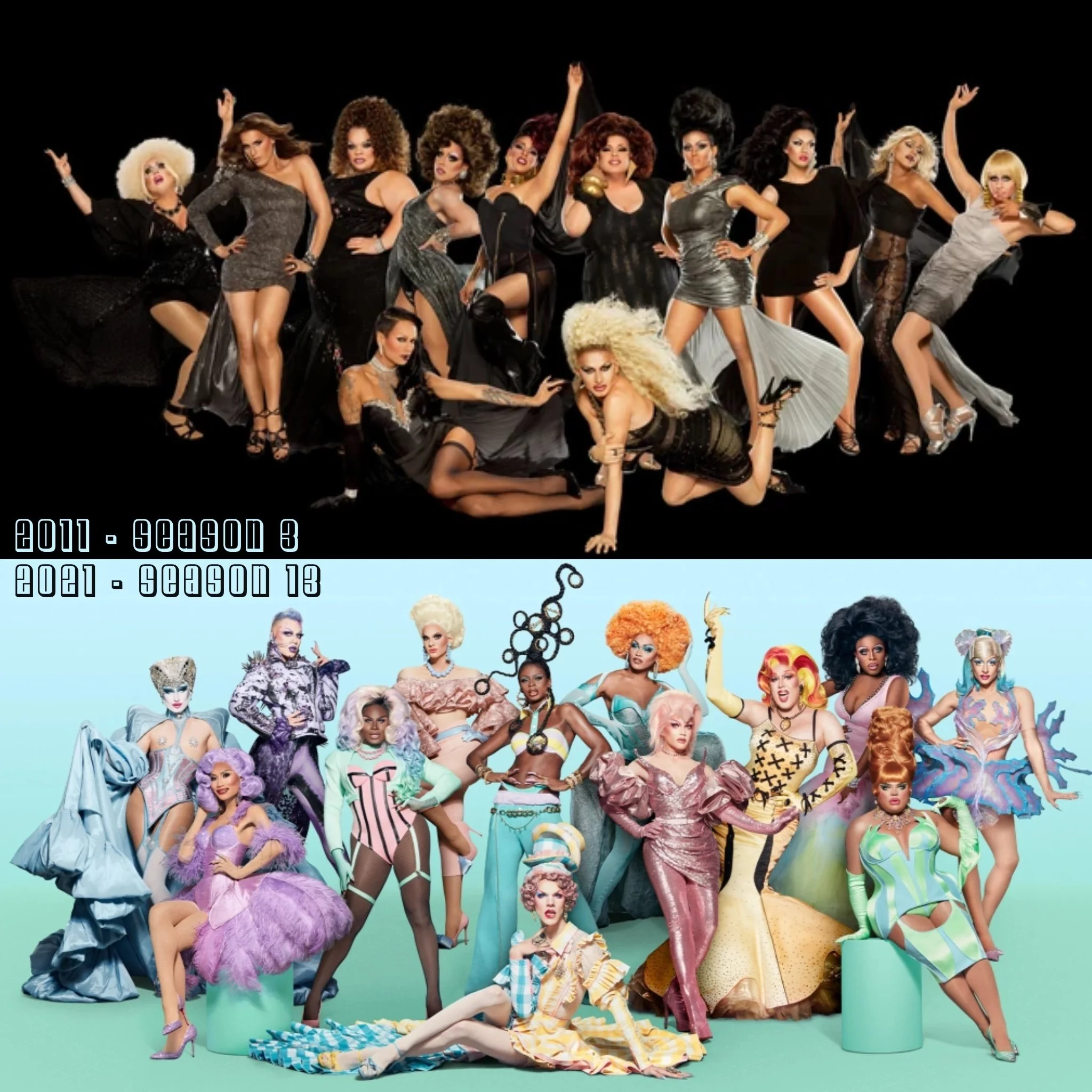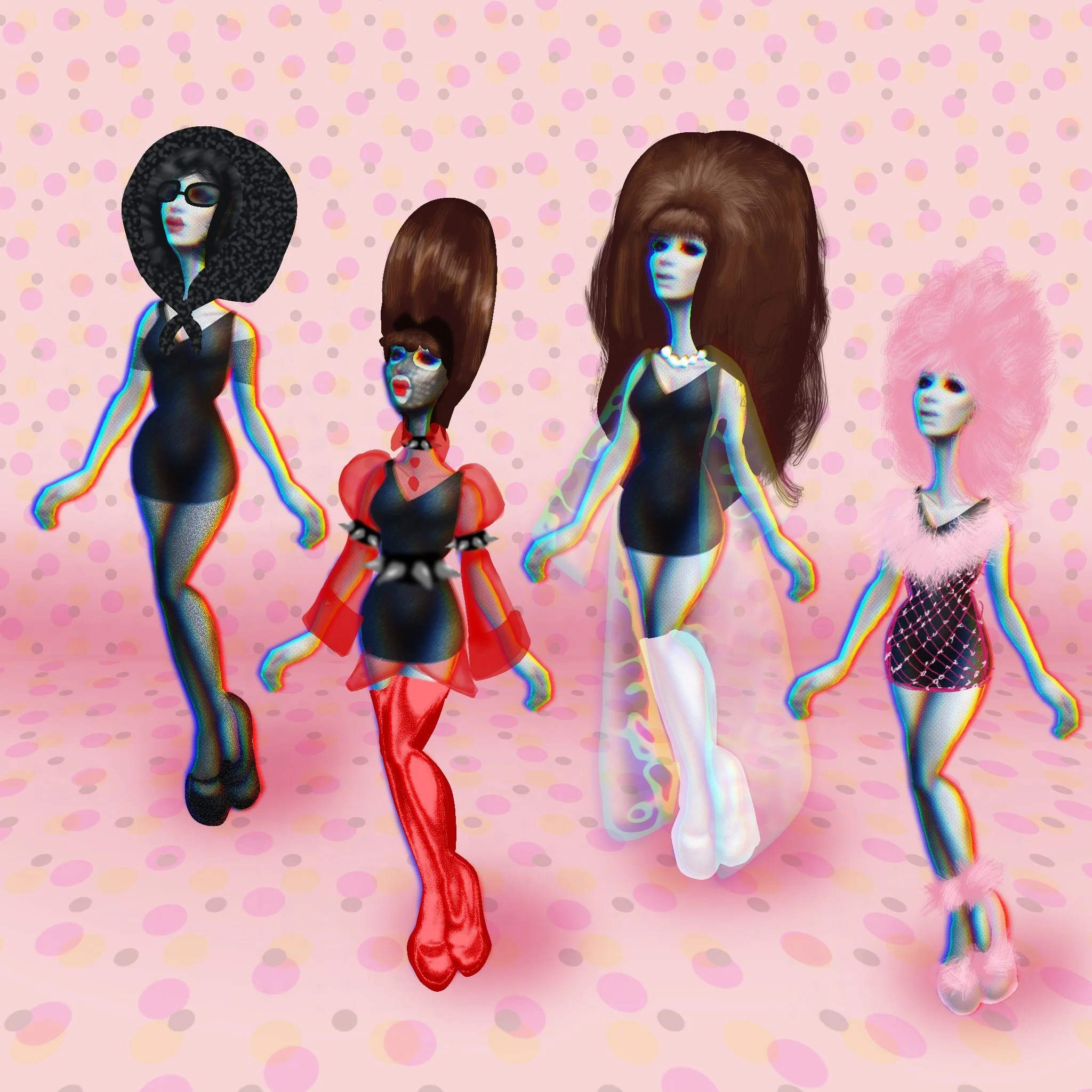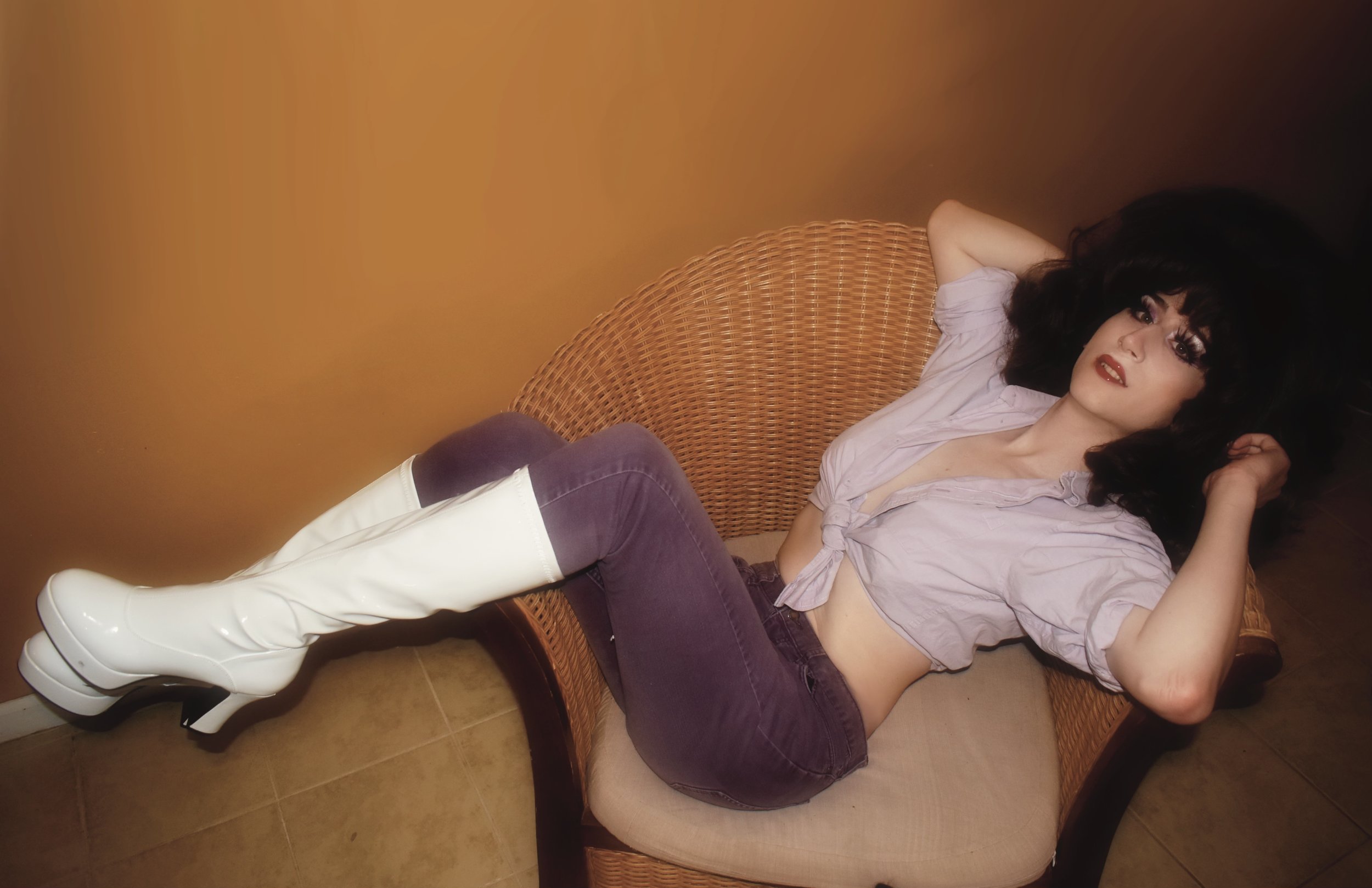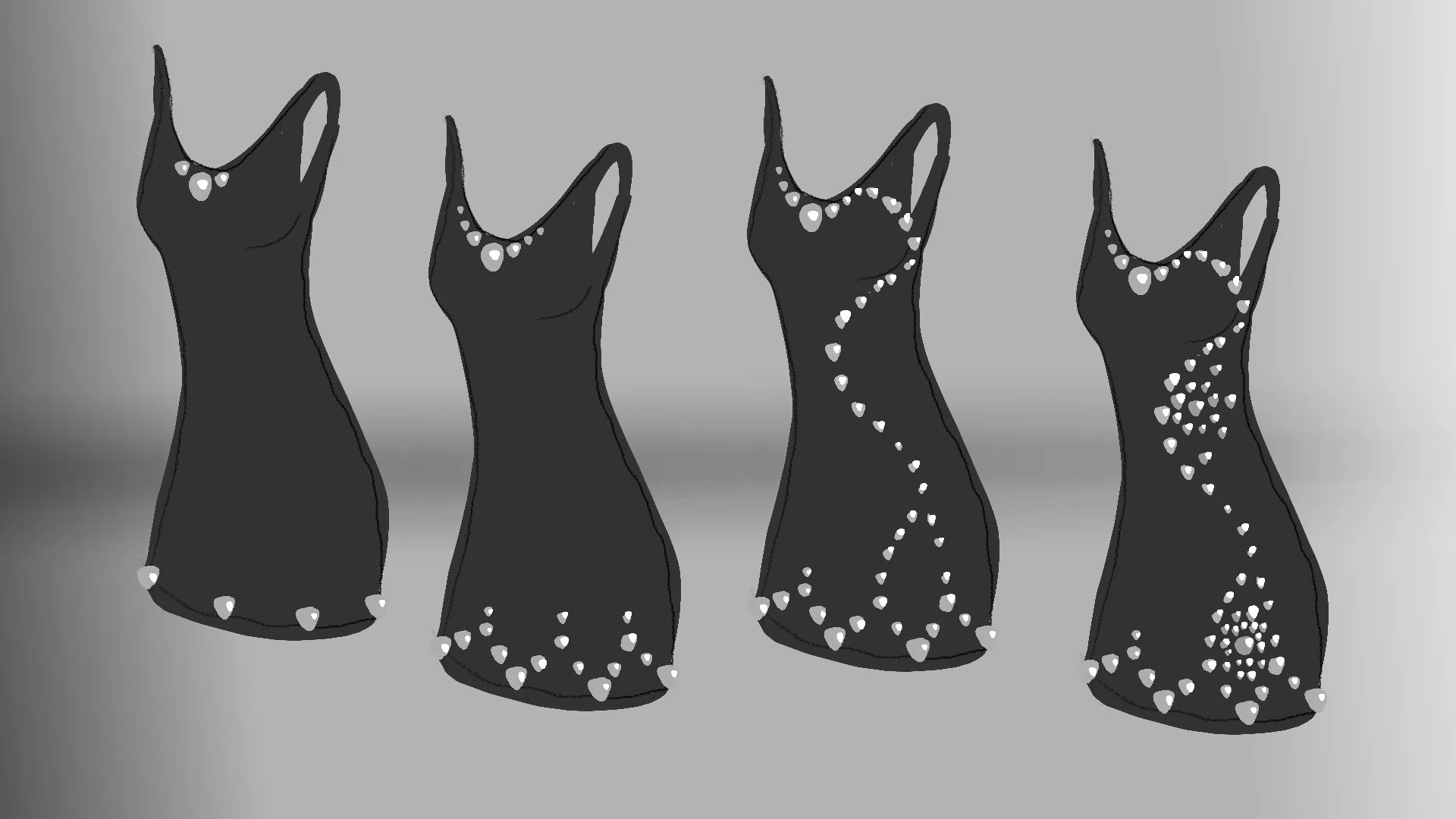Tips for Working for Tips
What does it mean to succeed as a drag artist?
After doing drag for almost a decade, I've seen expectations for entertainers sky rocket while rates have basically stayed the same. The idea that we should have custom couture and backup dancers every week is based on reality tv, not reality. Even for the girls that are on tv, the expectations have ballooned.
RuPaul’s Drag Race Promo photos season 3 (2011) vs. season 13 (2021). All gorgeous, but the latter have noticeably more custom and expensive couture.
If art isn't your main source of income, and for most of us it's not, it's alright to spend more than you'll earn. That being said, it's critical to be conscious of that. There's no one size fits all budget, but there are factors we can all consider.
Creating a fantasy is rewarding, but when scope grows out of control it has consequences on reality. We aren't just spending money. How much time are you willing to devote to a project? Do you have space to store all these materials? If you're getting help from others, are you treating them fairly?
Sometimes it's better to make compromises, or to save big ideas for when you have the resources to realize them. Sprinting in heels is dangerous! Pace yourself.
With the right styling, nothing will look off the rack on your rack! Mix and match separates, change your makeup, and accessorize. You can make something that feels fresh even if you've worn it all before. There's a reason the little black dress is a fashion staple.
Here are my paper dolls (Flaminimis). They are all wearing the same little black dress! By changing the accessories, hair, makeup, and articles they become totally different outfits. A big part of why I designed paper dolls in the first place was because I wanted to lower the barrier to enter into drag fashion.
Materials are all around you too. Whenever I get flowers or gifts from a man I save the ribbon to wear as a choker (I have a lot of ribbons). I've even repurposed clothes from my daily wardrobe to wear in drag:
In the daytime I wore these jeans and this shirt to my office job. At night I put on gogo boots, eyelashes, and my favorite wig, tied the shirt in the front, and I was ready for that month's centerfold shoot.
When you do decide to purchase new items, consider buying second hand, borrowing, or bartering. Barter is especially fun. I've done photoshoots in the past in exchange for sewing and acting work. It's a great way to save while getting to work on more of what interests you. My collaborations with other drag artists have been some of the most exciting and fulfilling creative work I’ve done in drag.
If you're making new things for yourself, maybe work on it in stages. Let's say you want to rhinestone a dress. It's easy to underestimate how many hours that can take. Start with a smaller version of the design you have in mind. As long as the level of detail is consistent across the dress, it will look finished. If you put too much detail in one spot first, you're locking yourself into doing the same amount for the rest. This way you can add more overtime and keep wearing it.
A rough illustration of what I mean by working in stages.
Whether you're shopping or crafting, you should prioritize the staples of your ensemble. For me, Flaminia, that's my hair. My wigs are easily the most expensive items I own (unless you count my lip filler, but that was not exclusively for drag). That expense was worth it, because I wear the same hair frequently. My hair creates silhouettes that are recognizable across a football field or even in a website icon.
My biggest investments go towards what will have the most long term benefit. That philosophy is reflected in how I chose to do drag too.
What makes drag so incredible is that it's a medium, not a genre. I've met incredible performers from a wide variety of disciplines. Dance, comedy, fashion, theater, makeup, art. Despite this, the vast majority of modern commercial drag shows follow a rigid structure of four to six minute lip sync mixes.
For a long time, I thought my goals were what I saw my peers aspire to. Making numbers, earning titles and followers, and getting booked. That's the tried and true method of making money doing drag, but after years of striving for that I realized I'm not actually interested in being that kind of nightclub act.
Now I write, make videos, sing live, develop video games, and design weird paper dolls of myself, all through the lens of this alter ego I've crafted. I'm spending more time on what I want to build for the long term.
I still dream of making a career out of my creative pursuits. I still say yes to gigs if it’s doing something I’m interested in. I hosted a bingo this month and that was a lot more personally fulfilling than doing a lip sync. I'm exploring avenues outside of the norm too. Even if I never manage to make art my primary source of income, I consider myself successful as long as I’m able to create what I care about.
P.S. If this article seems familiar, it’s because it is! I recently met a nice British man that’s making his own gay magazine, and I sent him my blog to see if he’d be interested in republishing any of the articles. He liked The Not So Fierce Economics of Drag, but five months later… I didn’t like it as much. I still agree with a lot of the points I made there (and kept in here), but I wrote that from a place of frustration. With more time, I feel more hopeful (and less resentful) about the state of this subculture. I wanted to have a more constructive tone, so I rewrote it as this.
I’ll have more information on the nice British man and his magazine as it develops. k thx bye.



